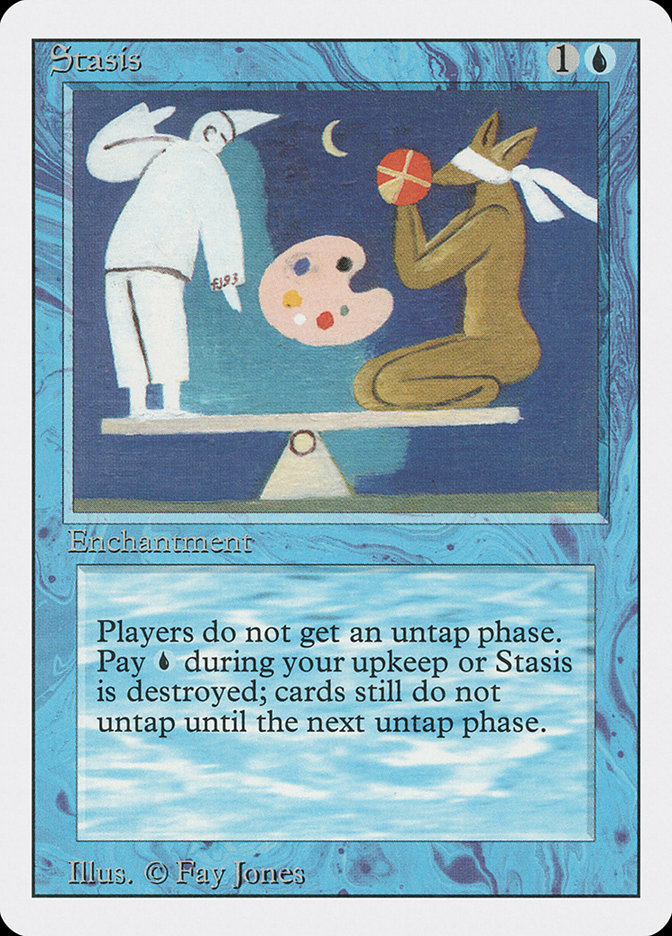
Magic: The Gathering has seen plenty of control decks over the years, but few inspire the same mix of awe and frustration as Stasis. This classic strategy, built around the namesake enchantment from Alpha, represents one of the most notorious ways to lock an opponent out of the game. Whether you love or hate it, Stasis remains a defining example of MTG’s ability to reward creative (and sometimes cruel) deckbuilding.
Let us discuss it further in this blog article.

The Core of Stasis
At the heart of the deck is Stasis, a blue enchantment that prevents all players from untapping their permanents. This effect alone would be symmetrical, but Stasis decks break that symmetry using ways to avoid paying its upkeep cost or bypass its limitations.
Key components include:
- Stasis (Alpha) – The deck’s centerpiece, stopping both players from untapping.
- Boil Down the Cost – Early versions used Chronatog to skip turns and ignore the cumulative upkeep. Later iterations used cards like Forsaken City or Gush to keep resources flowing.
- Bounce and Reset – Boomerang, Chain of Vapor, or Capsize allow the pilot to return Stasis to their hand and replay it before their opponent gets a chance to untap.
- Card Draw and Resource Management – Howling Mine, Ancestral Recall, and later Standstill provide card advantage, ensuring the Stasis player never runs out of answers.
- Win Conditions – In the old days, Black Vise punished opponents for holding cards. Later decks used Mishra’s Factory, Chronatog, or Jace, the Mind Sculptor as finishers.
Why Stasis Works (and Frustrates)
Stasis functions by making Magic unplayable for the opponent. They can’t untap lands, play spells, or develop a board. The deck is a test of patience, both for the pilot and their opponent. It requires precise sequencing, knowing when to bounce Stasis or find an alternate win condition before its own lock crumbles.
The Evolution of Stasis
While Stasis has seen less competitive play in modern formats due to power creep and more interactive designs, its influence remains. Variants like Turbo Fog and prison decks continue the legacy of resource denial. In casual and legacy play, Stasis is still a deck that makes opponents groan.
Playing Stasis Today
For players looking to relive the old-school MTG pain train, Stasis is still a viable deck in Vintage and Legacy, though far from top-tier. Newer tools like Narset, Parter of Veils and Teferi, Time Raveler can complement its lock strategy, while classic blue control elements like Force of Will ensure it can survive in a fast metagame.
Here below is an example decklist:

Love It or Hate It, Stasis is MTG History
Few decks embody the essence of control like Stasis. It’s a relic of a time when Magic’s designers were still exploring what was possible, and players were pushing those boundaries to their limits. If you want a deck that will test your endurance and your opponent’s patience, Stasis might be your perfect throwback challenge.
